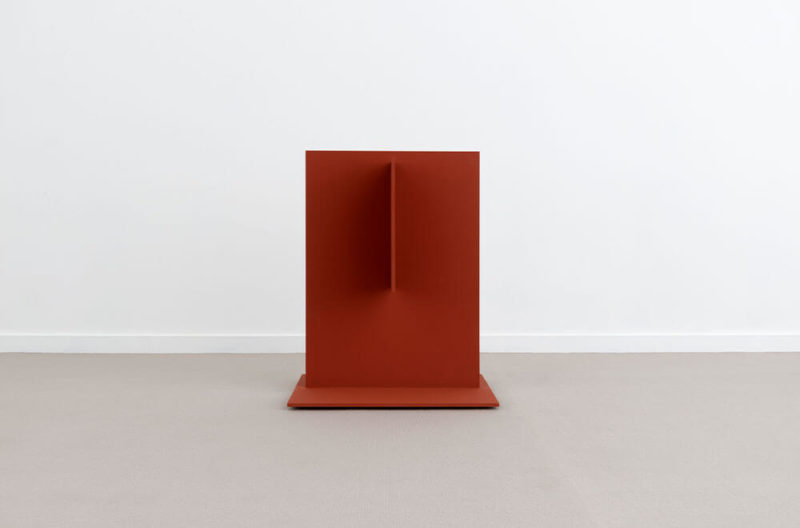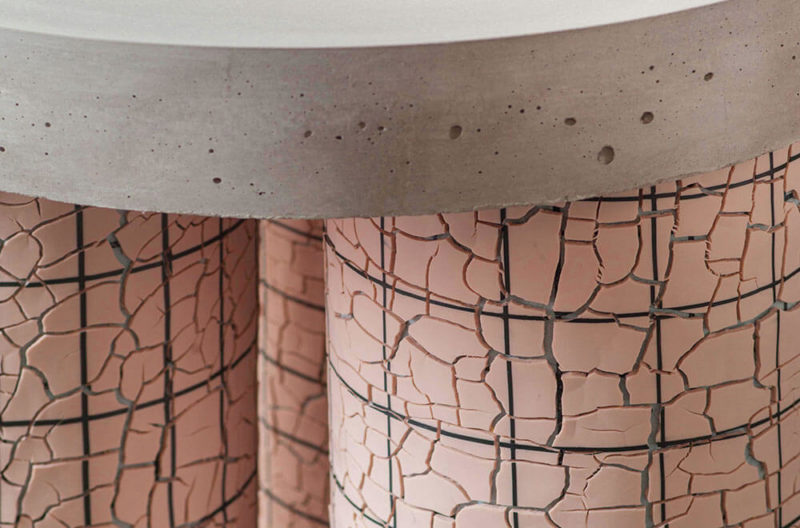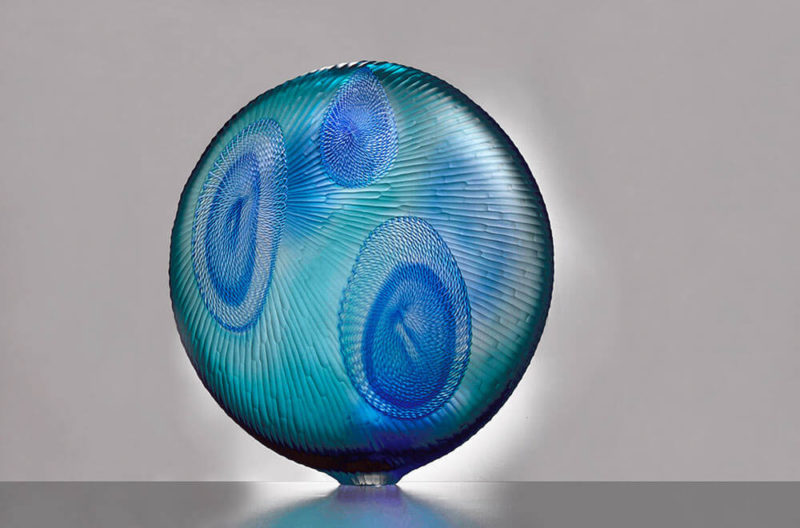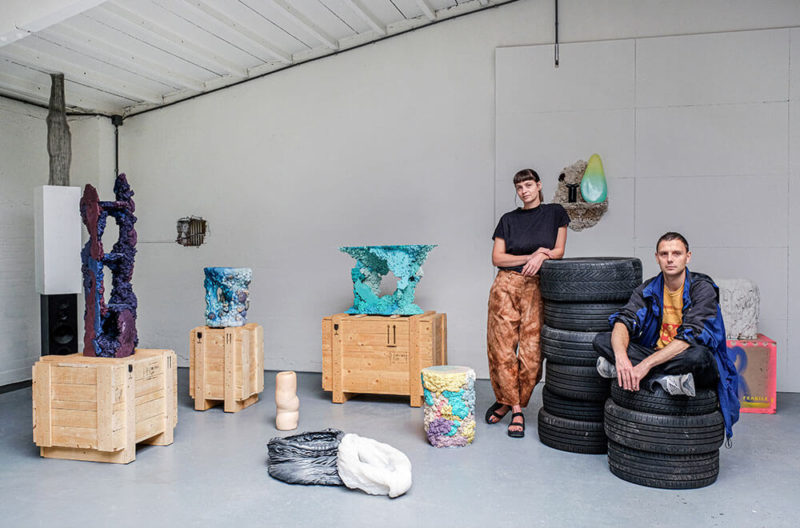Rooms Studio / Distant Symphony
The designers who came of age in post-Soviet Georgia continue their exploration of the personal and social through objects and furniture.
Emma Scully Gallery, New York
14th October – 20th November 2021
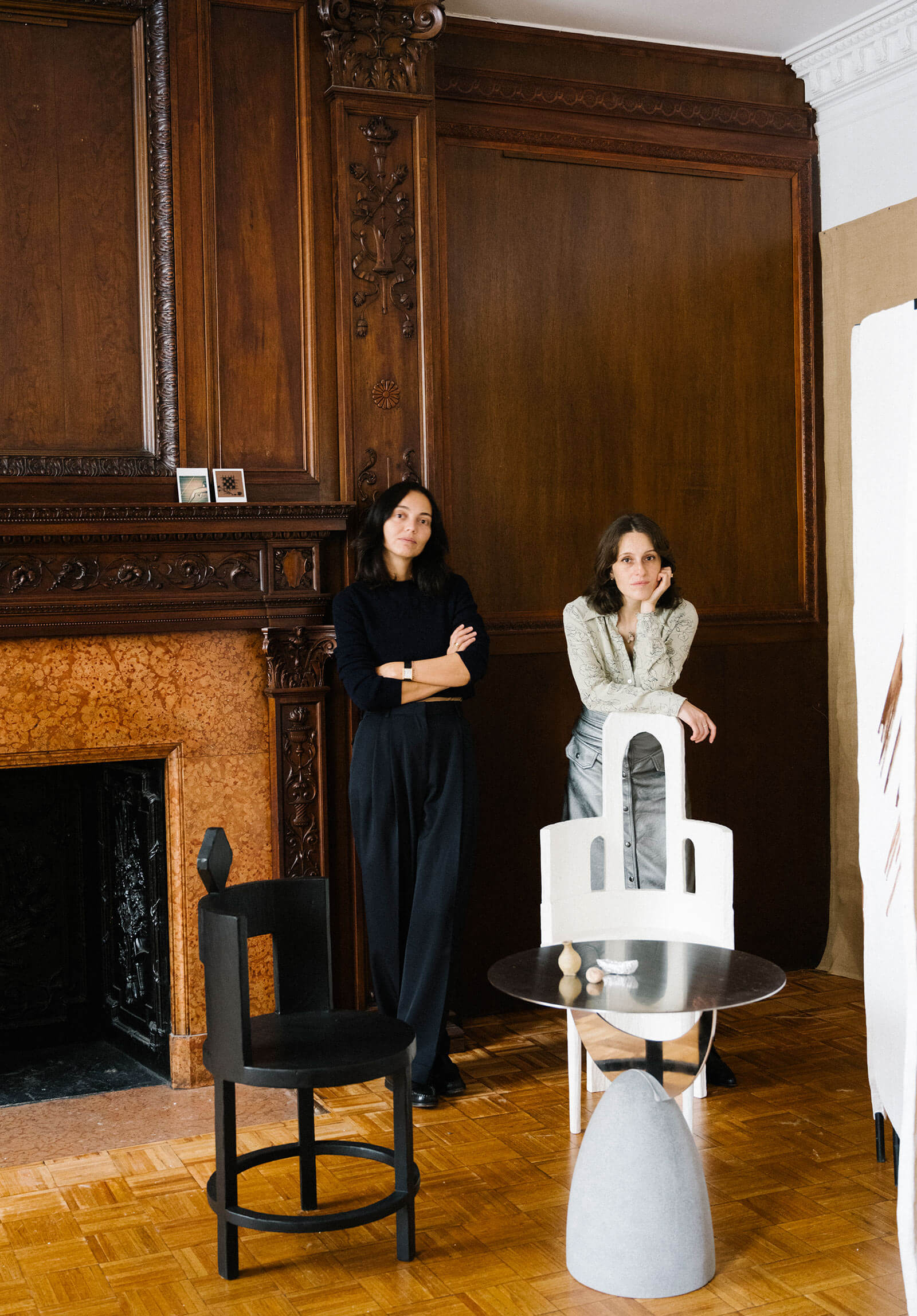
(Left to right): Keti Toloraia and Nata Janberidze
COURTESY: Rooms Studio and Adrianna Glaviano / 2DM Management
DESIGNERS KETI TOLORAIA and Nata Janberidze met while studying interior design at Tbilisi’s Academy of Arts in the early 2000s, and quickly realised they shared similar design ideas and vision. “Whether we should work together was never a question – it was almost a given,” Toloraia tells The Design Edit. The decision has paid off. Since the duo launched Rooms Studio in the Georgian city over a decade ago, their mysterious sleek furniture pieces have been gracing top notch design events across the globe, from Design Miami/ to the Salone.
Rooms Studio has just opened their biggest exhibition in the US yet, at New York’s Emma Scully Gallery. Titled ‘Distant Symphony’ the show offers an immersive presentation that does justice to the studio’s deeply personal yet socially-inspired practice.
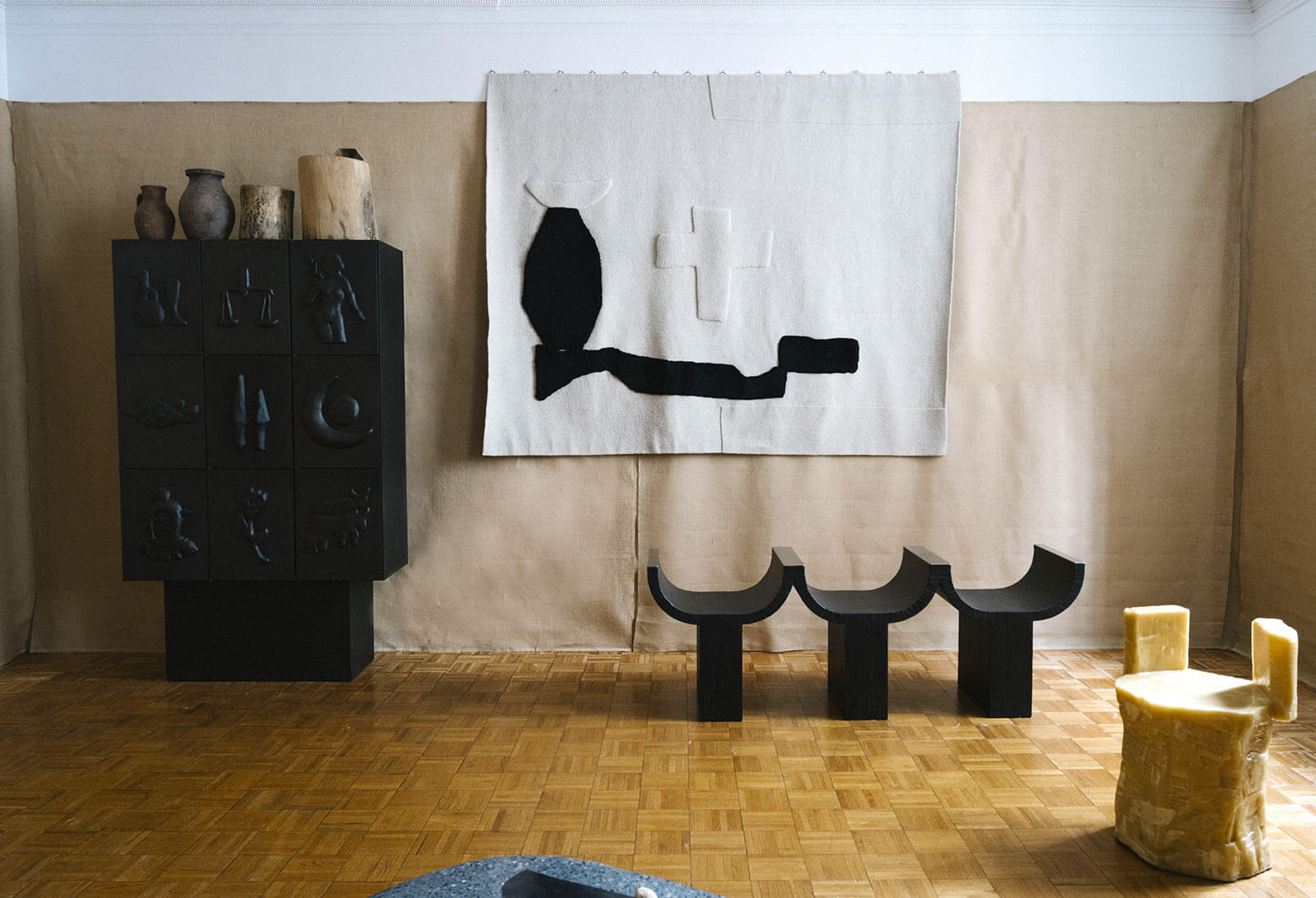
Installation view, ‘Distant Symphony’
COURTESY: Rooms Studio and Adrianna Glaviano / 2DM Management
Growing up in 1990s Georgia was a challenge. At home, the electricity and water were intermittent, whilst the Academy of Arts was undergoing a transition from the Soviet ideals towards an undetermined new territory. “As a result, our studies at the Academy were quite narrow-minded,” Janberidze remembers. The pair used their mutual drive and wide interests to set their own path, and got involved in designing interiors and projects early on. Ever since, transformation has been a philosophical foundation of their practice. “Whatever we create, it has a subtle influence and undertone of our lives lived through that post-Soviet time, as well as today’s era, because we are in a constant motion,” Janberidze says.
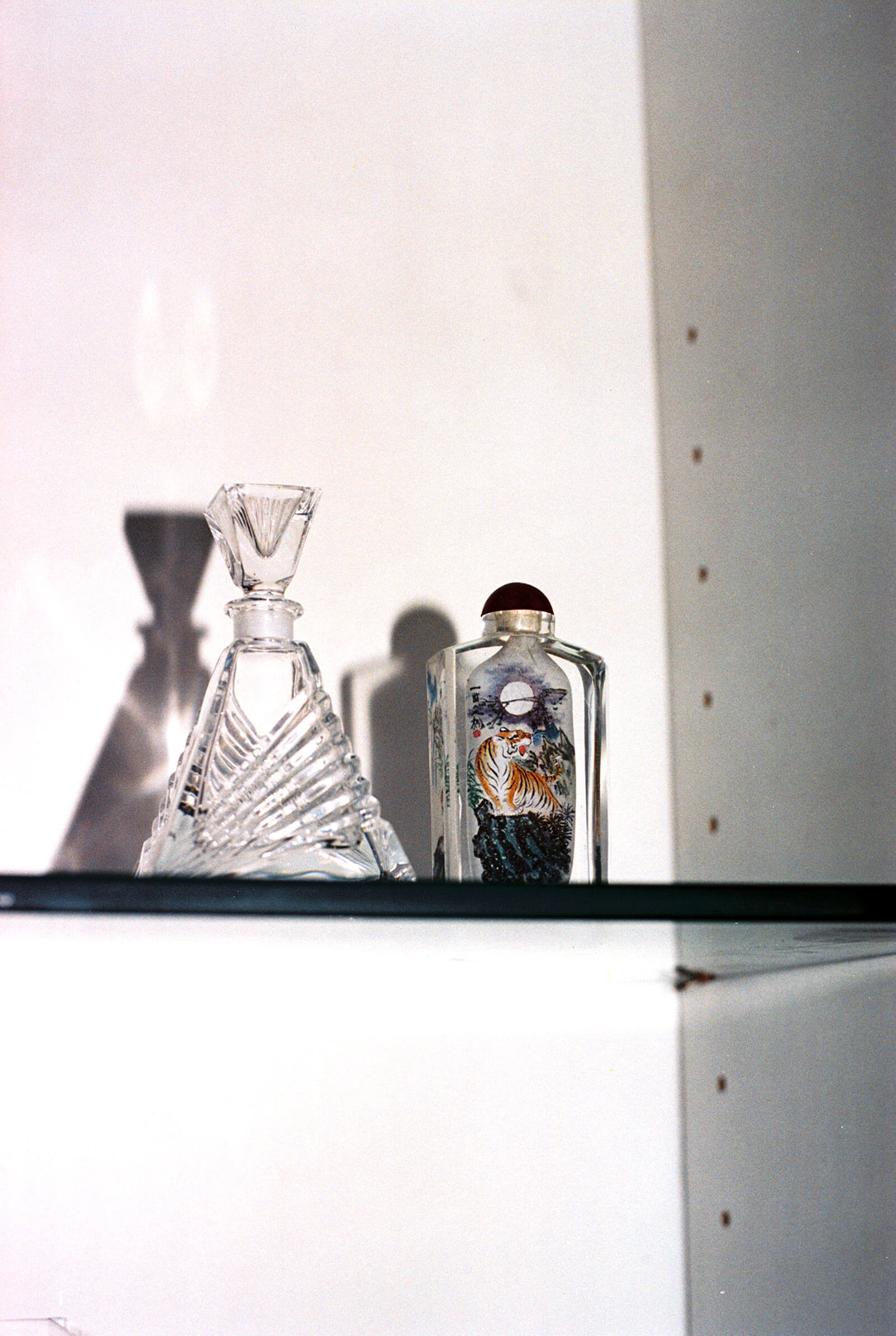
Designers’ personal belongings
COURTESY: Rooms Studio and Adrianna Glaviano / 2DM Management
The anchoring piece, ‘Iron Secret Cabinet’, offers the ideal starting point to investigate the duo’s design vision. The piece is composed of nine copper and metal cabinets, each embossed with folkloric symbols. “It’s a visual expression of hidden symbols of life, and everyone can interpret them differently to create their own unique story,” explains Janberidze. This medley of the remembered and interpreted is key to their design philosophy.
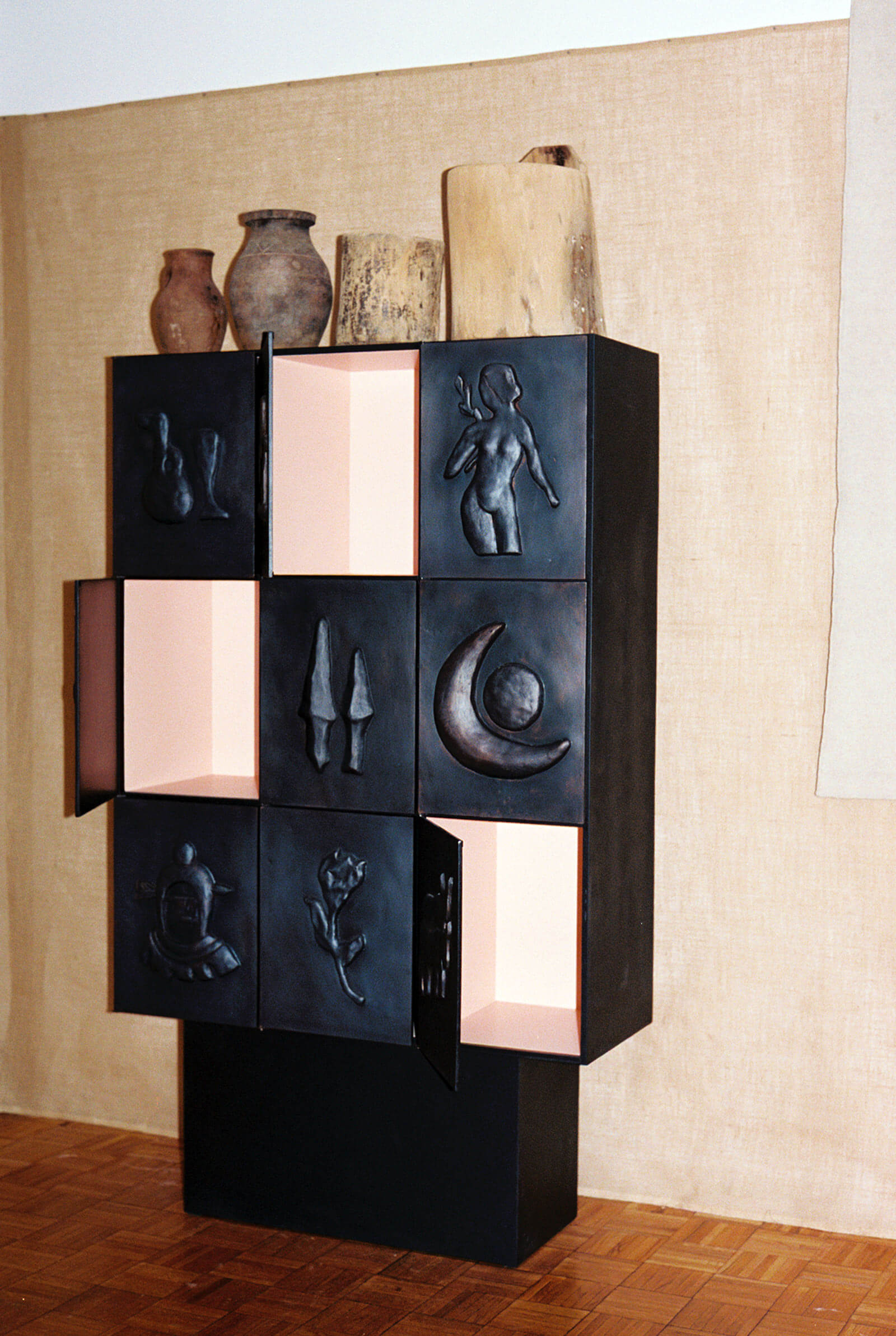
Rooms Studio, ‘Iron Secret Cabinet’ 2021
COURTESY: Rooms Studio and Adrianna Glaviano / 2DM Management
“A large portion of Studio Rooms’ creations are hand-crafted by Georgian makers and artisans …”
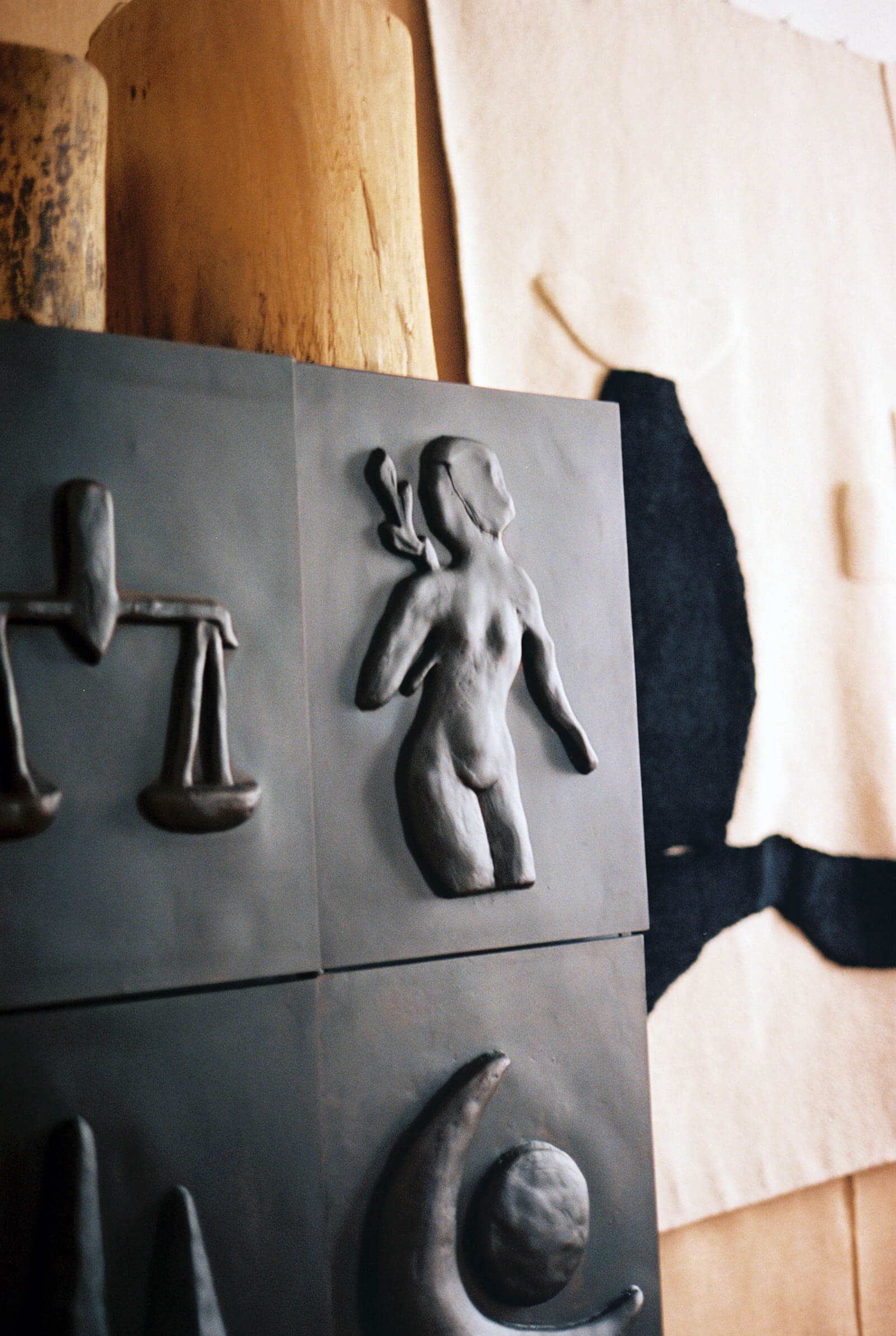
Rooms Studio, ‘Iron Secret Cabinet’ 2021 (detail)
COURTESY: Rooms Studio and Adrianna Glaviano / 2DM Management
“The designers want to honour and preserve these traditions, as well as carry them forward into the future”
In post-Soviet Georgia notions of ownership and access were deeply shaped by the Communist ideology. This collectivist approach to material, use and form is filtered through the designers’ own personal experiences of youth, creative drive and beauty. Growing up with an architect father, who designed their family apartment, was deeply influential for Janberidze. Her first image of an object was a white vintage leather dentist stool that her father used as his work chair. “I admired that stool, as well as the fact that it had a different function at our home,” she remembers. Today, their design blends subjective visions with impressions of objective experiences during the Soviet era and its aftermath. “Unconsciously all those aesthetics are still there and they influence our work even today – Soviet architectural shapes are what influences me the most,” adds Toloraia.
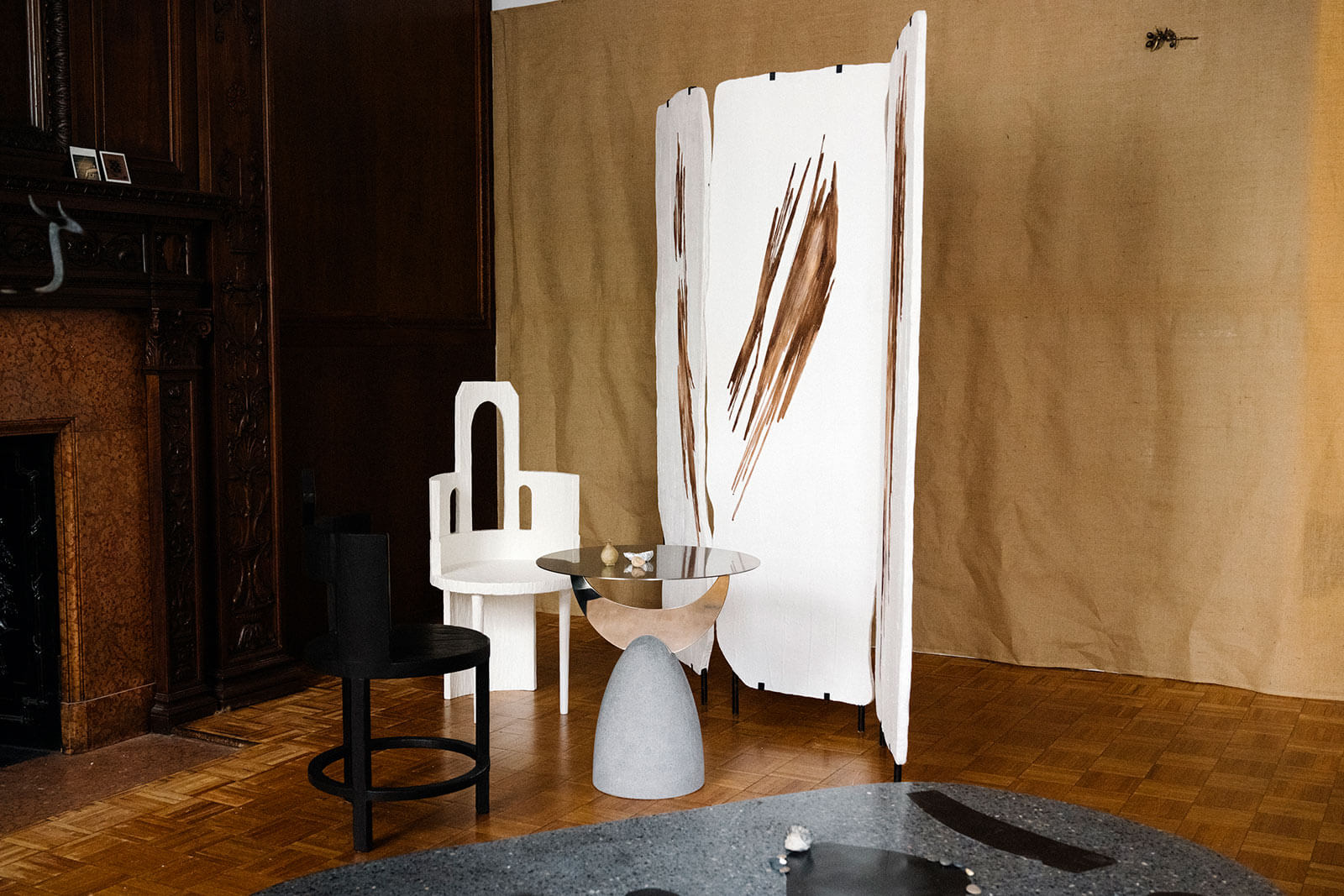
Rooms Studio, ‘Sculptural Chair I’, 2017; ‘Sculptural Chair III’ (original design 2017 – white version, 2021); ‘Half Moon Coffee Table’, 2017; ‘Supra Coffee Table’, 2019; ‘Gateway Divider’ in collaboration with Salome Chigilashvili, 2021
COURTESY: Rooms Studio and Adrianna Glaviano / 2DM Management
The creative potential in Georgia, and especially Tbilisi, is another powerful inspiration for the two designers. A few of the objects in the exhibition were designed in collaboration with Georgian artists Shotiko Aptsiauri, Salome Chigilashvili and Mariana Chkonia. Moreover, a large portion of Studio Rooms’ creations are hand-crafted by local makers and artisans who continue the country’s wood carving techniques. “We want to give these traditions a second chance, by honouring and preserving them – and carrying them forward into the future,” says Toloraia.
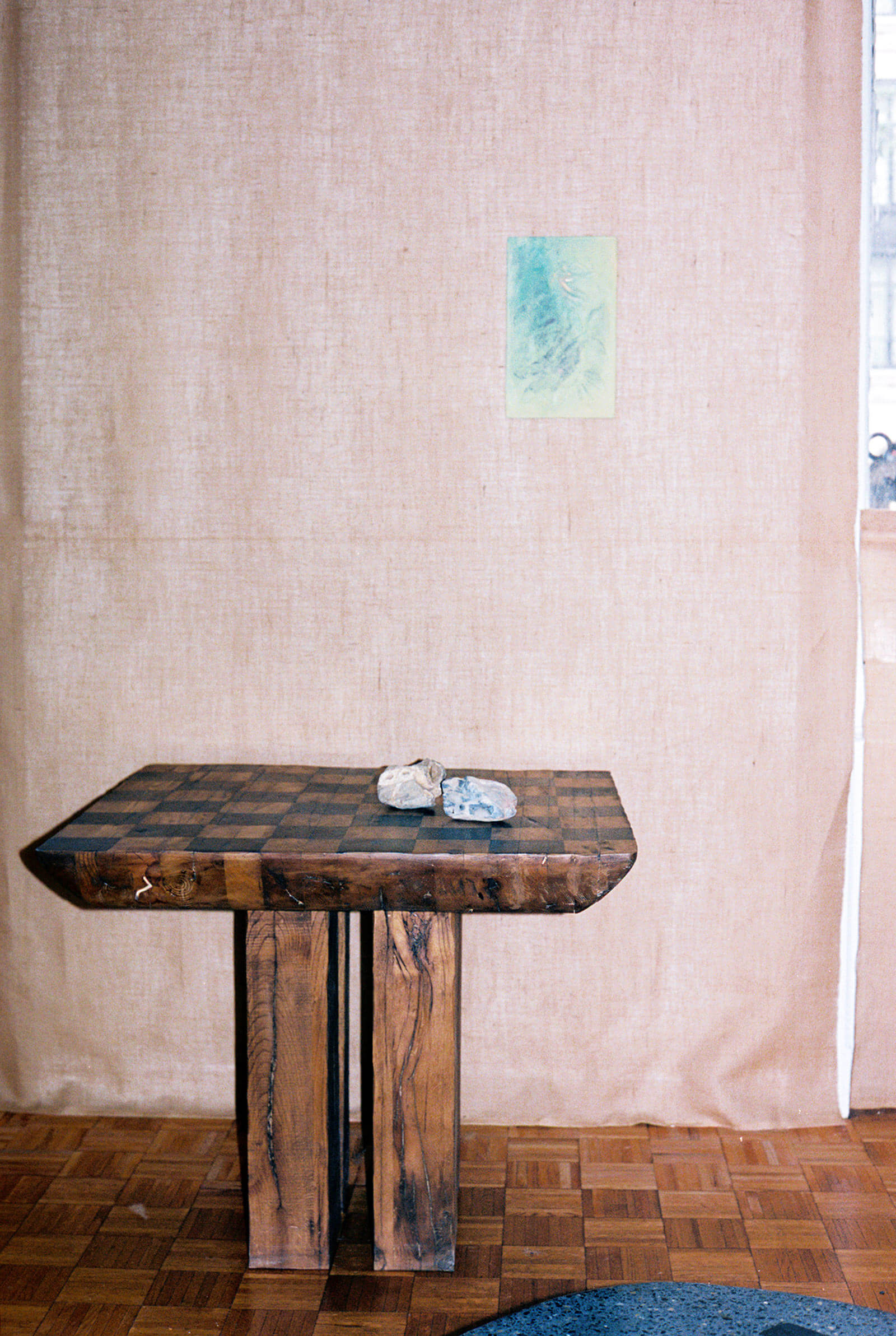
Rooms Studio, ‘Oversized Chess Table’, 2019
COURTESY: Rooms Studio and Adrianna Glaviano / 2DM Management
As well as reinterpreting older traditions, the designers also use existing materials to create new functions and forms. For instance, they largely use reclaimed wood and the timber beams of demolished houses. The key to bridging the past and the present with a sleek contemporary language has been a commitment to raw materials and modest forms. “This gives the impression of being alive and real – choosing those colours and shapes is almost instinctive and happens naturally,” explains Janberidze.
The show’s two sections (or ‘caves’ as they call the nooks), carve slices of inner space offering different displays of objects. “We use caves metaphysically, as an expression of our inner state, like showing our inner ‘homes’,” Janberidze says.
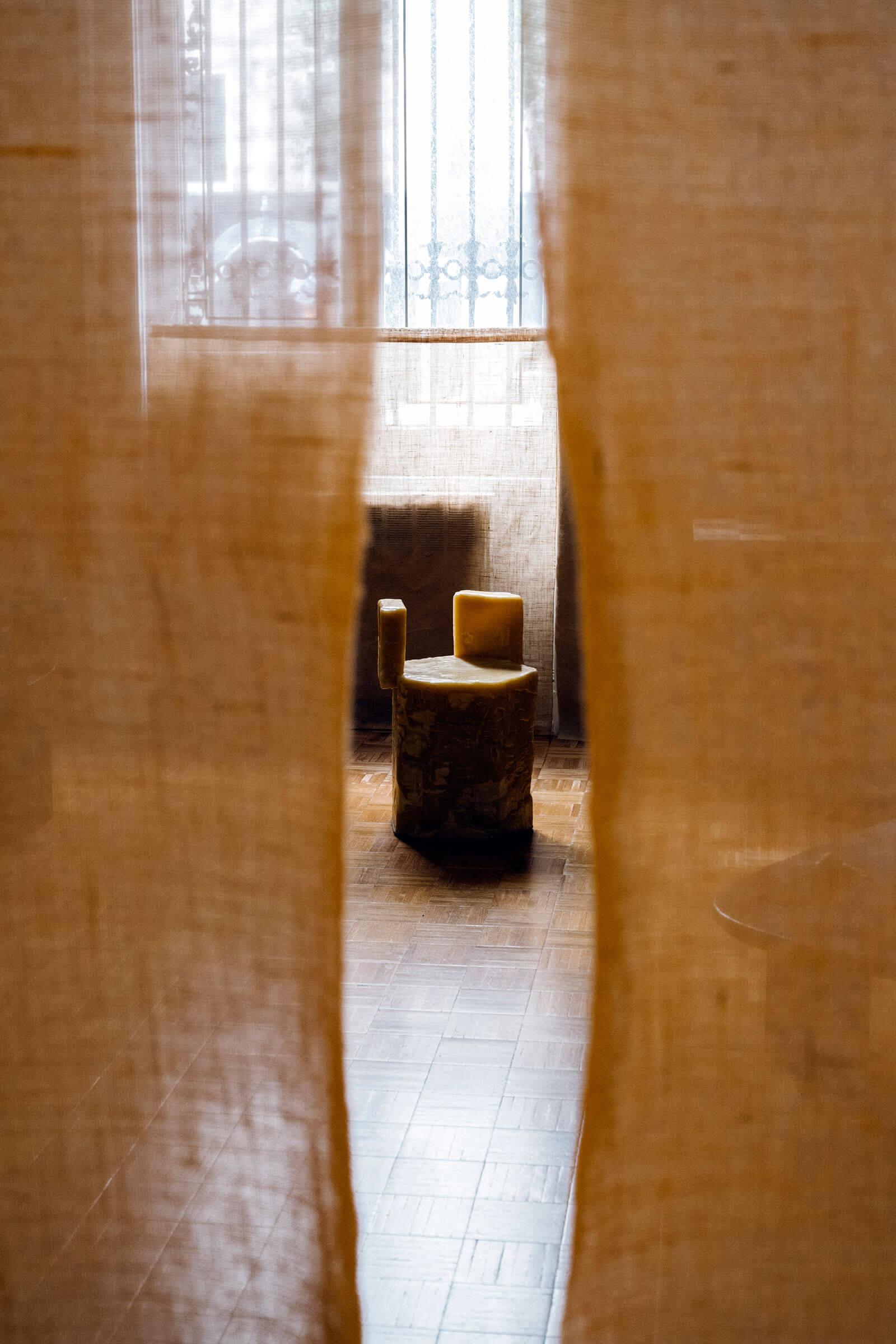
Rooms Studio, ‘Sacral Geometry Stool’ in collaboration with Shotiko Aptsiauri, 2021
COURTESY: Rooms Studio and Adrianna Glaviano / 2DM Management
Theatricality and collaboration have been central elements of Studio Rooms’ practice. Their Design Miami/ installation, ‘In Circulation’, in 2019 had a concrete stool spray painted by Georgian graffiti artist Max Machaidze; visitors were invited to carve into another bench made of wood. Both pieces embodied the urge to protest against and resist official control – whether in a Socialist state or in today’s high-surveillance society. The seats’ demure and modest aesthetic was influenced by socialist communal design, such as bus shelters and classrooms. At the same time, they powerfully communicated their individual personality and raised questions of value and authorship.
Knife-carved wood or graffitied walls were common sightings during the collapse of the Soviet regime when Studio Rooms’ founders were in the fourth grade. This blurring of the public and the private – the home and social space – has been critical in their approach to function and beauty, which may occasionally seem at odds with each other in design. The freedom of expression that emerged after the regime’s collapse is fruitful territory for the designers to explore.
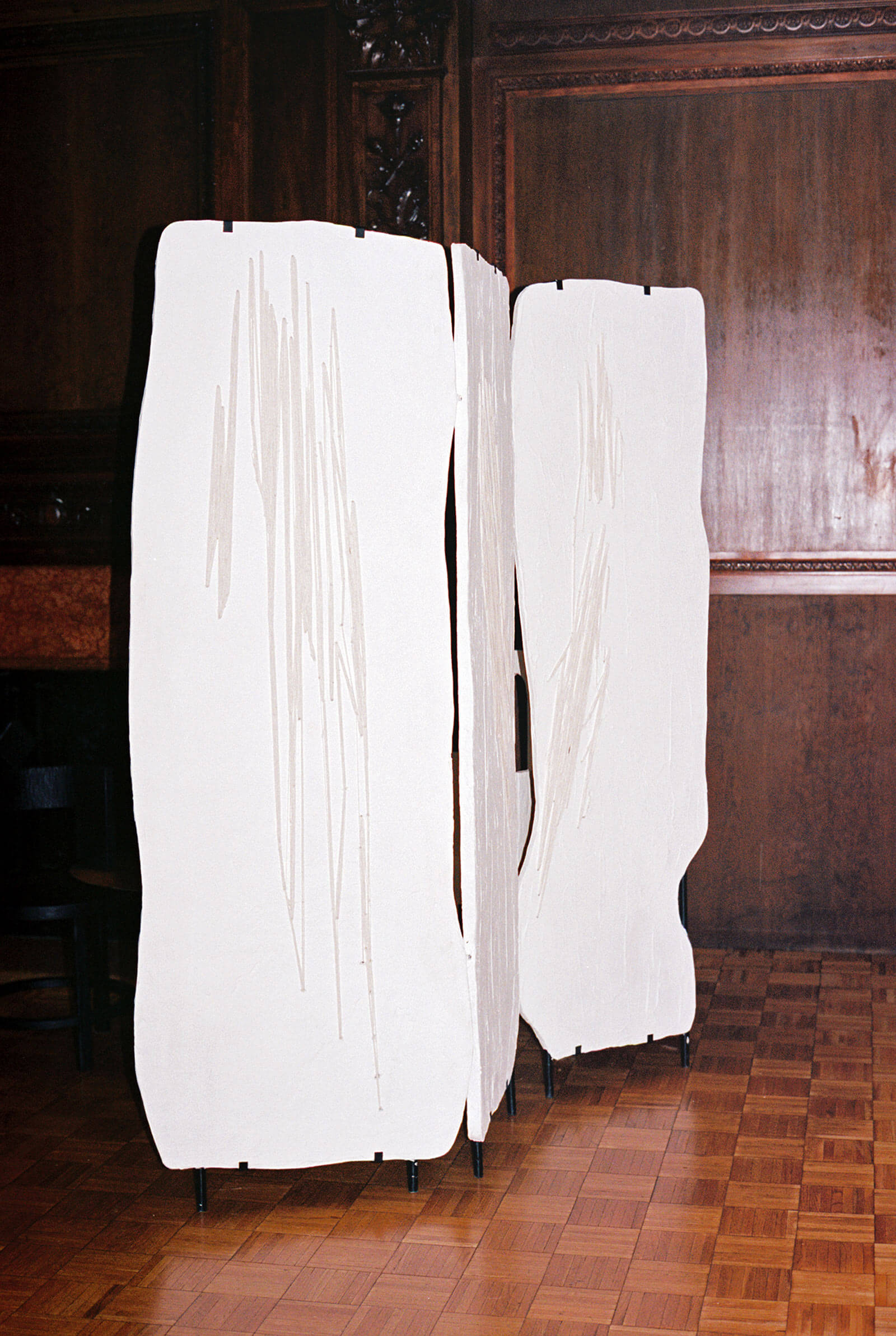
Rooms Studio, ‘Gateway Divider’ in collaboration with Salome Chigilashvili, 2021
COURTESY: Rooms Studio and Adrianna Glaviano / 2DM Management
The objects in ‘Distant Symphony’ don’t mimic the participatory nature of the ‘In Circulation’ installation at Design Miami/ – but their narratives and aesthetic cues are still embedded in an idea of ongoing daily life. Their concept is based on “a specific experience of getting closer to one’s self,” say Toloraia and Janberidze, “as well as what we’ve lived through and how it shaped us and our works.”
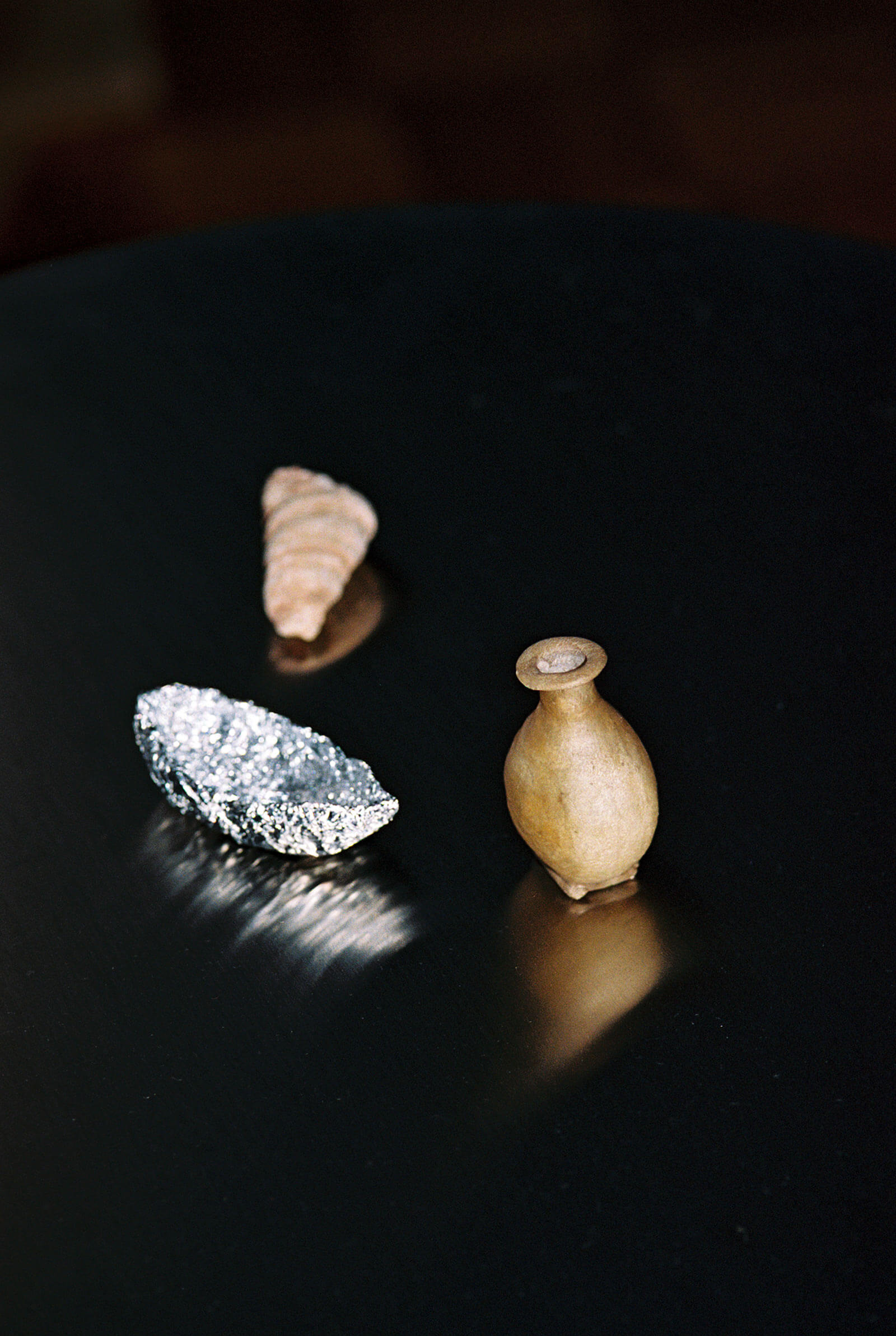
Designers’ personal belongings
COURTESY: Rooms Studio and Adrianna Glaviano / 2DM Management
‘Iron Chandelier’, which they had debuted in Miami, makes its return, with its hefty metallic presence and bull head details surrounding the circular form. The chained object is inspired by the open fire trivets of the designers’ homeland.
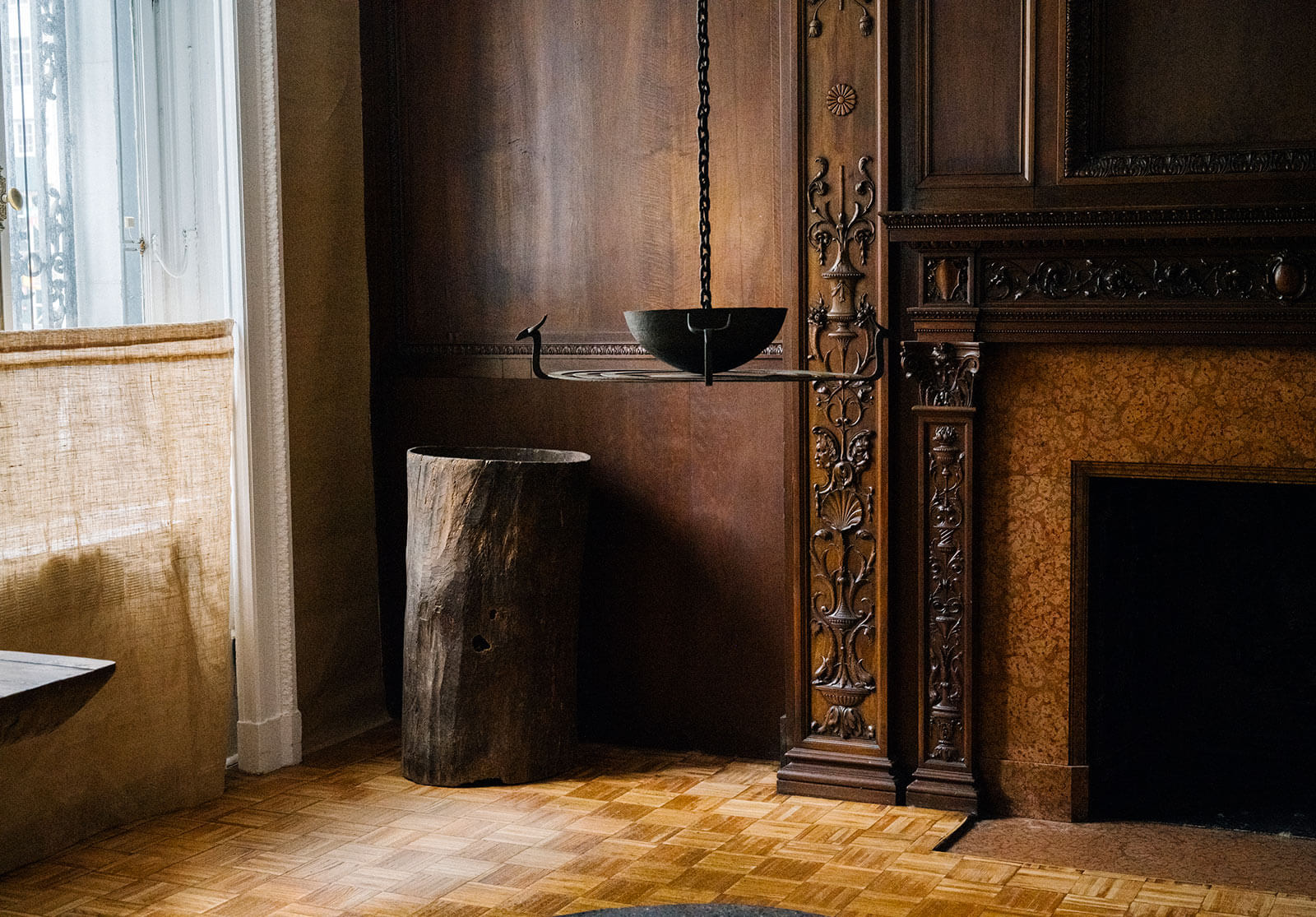
Rooms Studio, ‘Iron Chandelier’, 2019
COURTESY: Rooms Studio and Adrianna Glaviano / 2DM Management
“This show gives a unique glimpse into the range of Rooms’ collection,” Emma Scully emphasises. “I feel lucky to be showing their very personal collecting eye, in addition to their distinctive combination of Soviet-influenced design and the inspiration of traditional Georgian craft.”

Rooms Studio, ‘Iron Chandelier’, 2019 (detail)
COURTESY: Rooms Studio and Adrianna Glaviano / 2DM Management
Bringing their story to America widens their audience and the subsequent interpretation of their work. “I don’t know how much people know about Georgia, but what we do somehow touches them and rouses an interest about where we come from, which is very flattering to us,” muses Toloraia. The designers note that every piece plays an important role in conveying their overall story: “They each create one specific a specific feeling – hence the word ‘symphony’ in the title of our show.”
‘Distant Symphony’ by Rooms Studio at Emma Scully Gallery.




